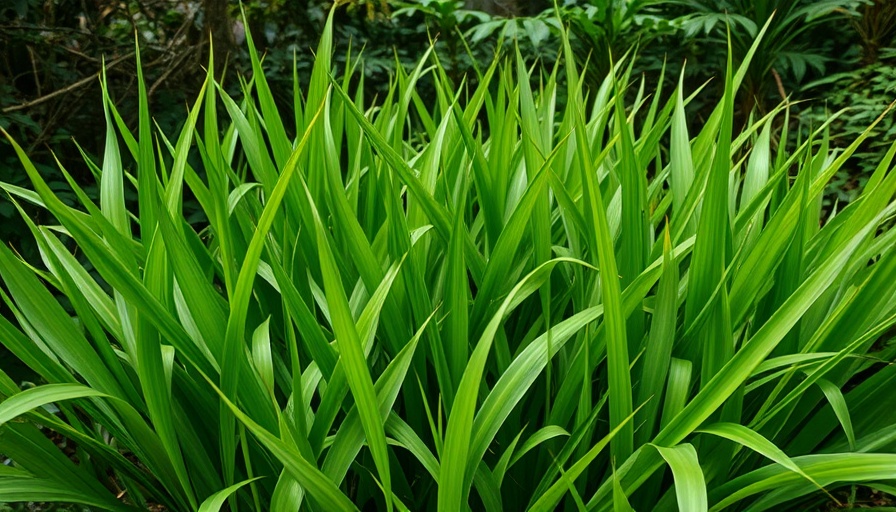
Understanding Japanese Stilt Grass
Japanese Stilt Grass (Microstegium vimineum) can create havoc in your garden, particularly in the scenic meadows of Folsom and El Dorado Hills. This resilient annual grass thrives in various environments, often overwhelming traditional plants. Many homeowners express despair over its aggressive growth, particularly in densely planted areas where control options seem limited. To combat this invasive species, it’s crucial to understand its lifecycle and methods for management, rather than pure eradication.
Life Cycle Insights: Why Timing Matters
Stilt Grass typically germinates in spring and begins setting seeds by August. Therefore, a proactive approach during the growing season can greatly influence success. Homeowners should aim to keep Stilt Grass low as it develops, thereby minimizing seed production. Cutting back the plant before it goes to seed can prevent further infestations. Remember, early intervention is repetitive; take caution in soil disturbance as it could bring new weed seeds to the surface.
Innovative Techniques Beyond Chemicals
Many discussions surrounding Japanese Stilt Grass control gravitate towards chemical herbicides. While they can be effective, homeowners should weigh the pros and cons—especially in densely planted gardens. Herbicides can inadvertently damage desirable plants, leading to further complications. A creative alternative approach includes the use of physical barriers and proper mowing techniques. For widespread infestations, consider leveraging a string trimmer to keep grass at bay without disturbing the surrounding flora.
The Role of Organic Methods
Homeowners aiming for organic solutions may feel disheartened by traditional methods. However, integrating cultural practices can offer significant strides toward managing invasive species. Consider mulching around plants to reduce soil exposure, thereby minimizing Stilt Grass growth. Moreover, seasonal fire, when done cautiously and under strict regulations, could be employed as a last-resort option; however, it requires professional guidance to mitigate risks of harming surrounding vegetation.
Community Engagement and Expert Advice
As the fight against Japanese Stilt Grass continues, community education and local workshops can offer vital resources for homeowners. Local gardening clubs or community gardens often host events on invasive species management. Engaging with experts and fellow gardeners fosters valuable knowledge exchange as well as shared experiences which can transform how residents in Folsom and El Dorado Hills tackle their landscaping challenges.
Taking Action: Practical Steps for Homeowners
To actively manage Japanese Stilt Grass in your landscaping projects, adopting a hybrid approach combining cultural, mechanical, and the prudent use of herbicides seems most effective. Assess your garden layout, identify key areas of invasion, and implement a strategic plan tailored to your garden’s ecosystem. Remember, combating invasive plants requires patience and persistence—but by following these guidelines, you’ll be well on your way to a flourishing garden.
Now, get started on your garden! With these insights, you're better equipped to reclaim your space from Japanese Stilt Grass. Don't wait too long; the battle against invasives is ongoing, and early intervention is your best bet.
 Add Row
Add Row  Add
Add 




Write A Comment